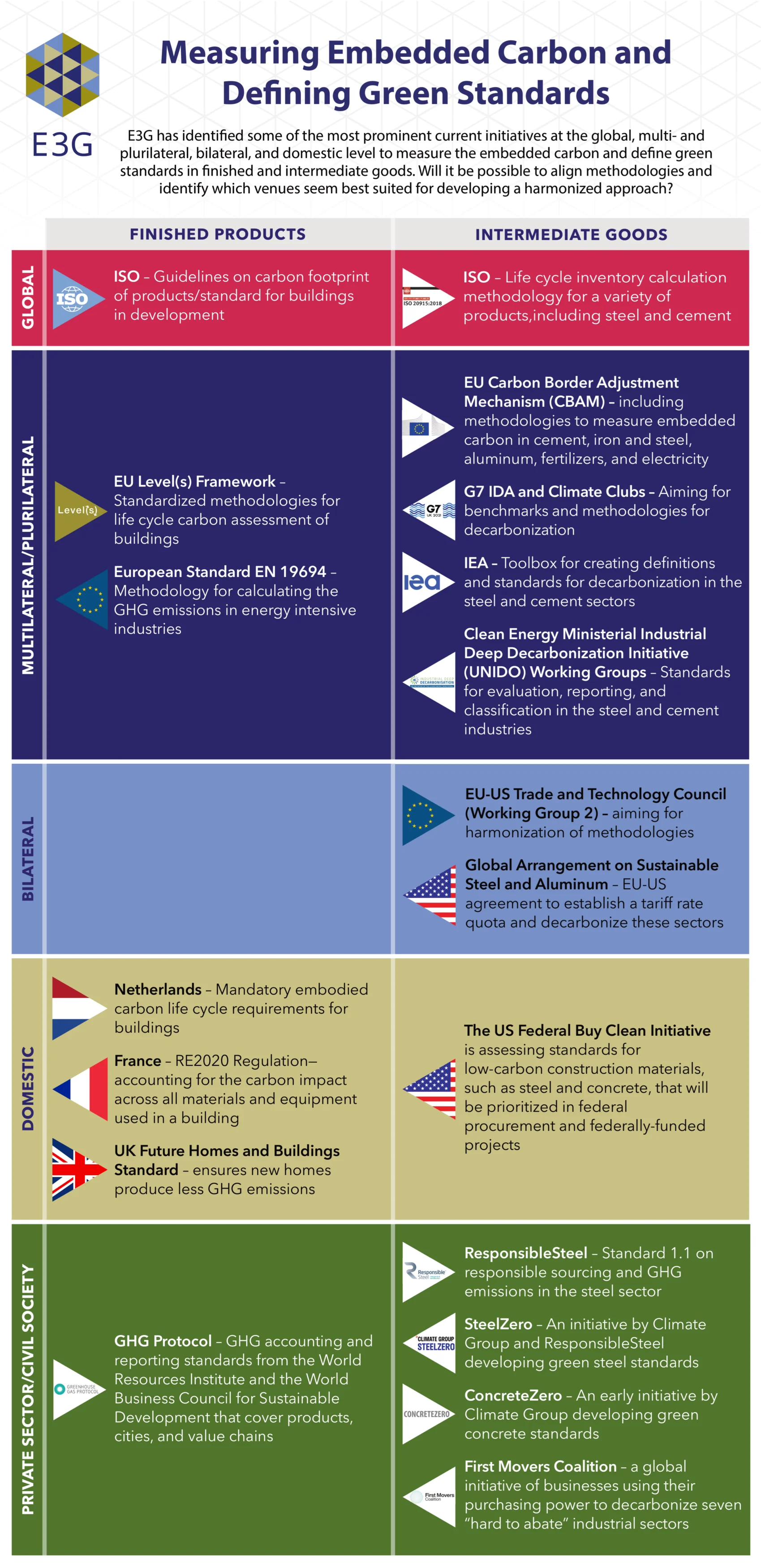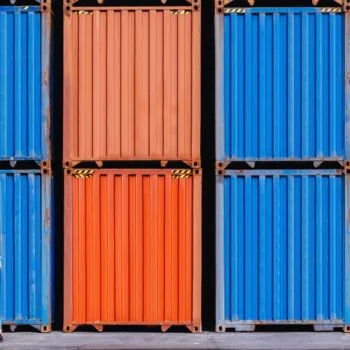Embodied carbon emissions of goods contribute significantly to the global carbon footprint, but there are various standards and frameworks for measuring them. Different methodologies mean different results which may lead to confusion and friction, affecting emissions reduction policies. How do we ensure our measurements of direct and indirect emissions are comparable, be it for compliance with domestic product standards or for climate-aligned trade measures such as carbon border adjustments?
What are embodied or embedded emissions?
Embodied carbon emissions of goods, also known as embedded carbon emissions, refer to the greenhouse gas emissions generated during the production and transportation of goods, from the extraction of raw materials to the manufacturing process and final delivery to the consumer.
These upstream emissions are often expressed in terms of carbon equivalents in order to express the impact of different greenhouse gases on the environment in a way that can be easily compared.
Measuring embodied carbon emissions
Today, there exists a multitude of standards and frameworks for measuring embedded greenhouse gas emissions. For instance, some only consider certain types of greenhouse gas emissions. Others differ by scope, i.e. they either measure only direct emissions from the manufacturing (scope 1), add energy-related emissions (scope 2), or include so-called value chain emissions – beyond the control of the manufacturer (scope 3).
These different methods can have significant implications for how emissions are attributed to different countries. For example, if a product is manufactured in one country and consumed in another, which country is considered responsible for the emissions generated during its production?
Mapping the different methodologies
Given the broad range of accounting methodologies, it is important to discern who is doing what and where. These methods differ in terms of their origin, with some being national, others being driven by the private sector, and still, others being bilateral, plurilateral or multilateral. Some initiatives look at intermediate goods only, such as iron, steel or cement, while others look at finished products. This adds to the complexity but also brings us closer to the point of consumption or use.
Without judging these approaches, E3G has produced a snapshot of current initiatives to provide clarity, facilitate synergies and help avoid overlaps. For simplicity’s sake, we sum all greenhouse gases under the umbrella term “carbon”, but we do not limit the accounting to carbon dioxide.

Finished products and intermediate goods
In our snapshot of the various accounting methodologies for embodied carbon emissions, we have distinguished between finished products and intermediate goods. Some methods focus solely on intermediate goods such as iron, steel, or cement, while others consider finished products. This difference in scope can greatly impact the accuracy and comprehensiveness of emissions measurement and attribution.
For instance, accounting for the embodied carbon emissions of intermediate goods, such as steel, provides valuable information about the carbon intensity of supply chains but does not capture the full carbon footprint of derived final products, such as cars or ships.
On the other hand, accounting for the embodied carbon emissions of finished, complex products offers a more complete picture of the carbon impact of a product but may not always accurately reflect the carbon intensity of each step in the production process, due to gaps in data availability, use of averages and estimates.
Towards a harmonious coexistence of approaches
It is not a given that out of the many standards, one or few will emerge as the winners. Some of the above approaches may eventually converge.
Convergence of standards for measuring embedded carbon offers benefits of reduced administrative costs both for businesses and regulators, resulting in more efficiency and can also lead to better transparency for consumers who want to know which products are more climate friendly. Especially, convergence would be beneficial in applying tariffs to the embedded carbon of traded goods, avoiding higher costs associated with trading goods.
While a convergence carries many advantages, such as increased clarity and ease of use and trade, we need to also brace for the possibility of a continued co-existence of a plurality of standards. In that latter case, E3G’s overview of various approaches can be a first step towards tools to translate between measurement systems.


